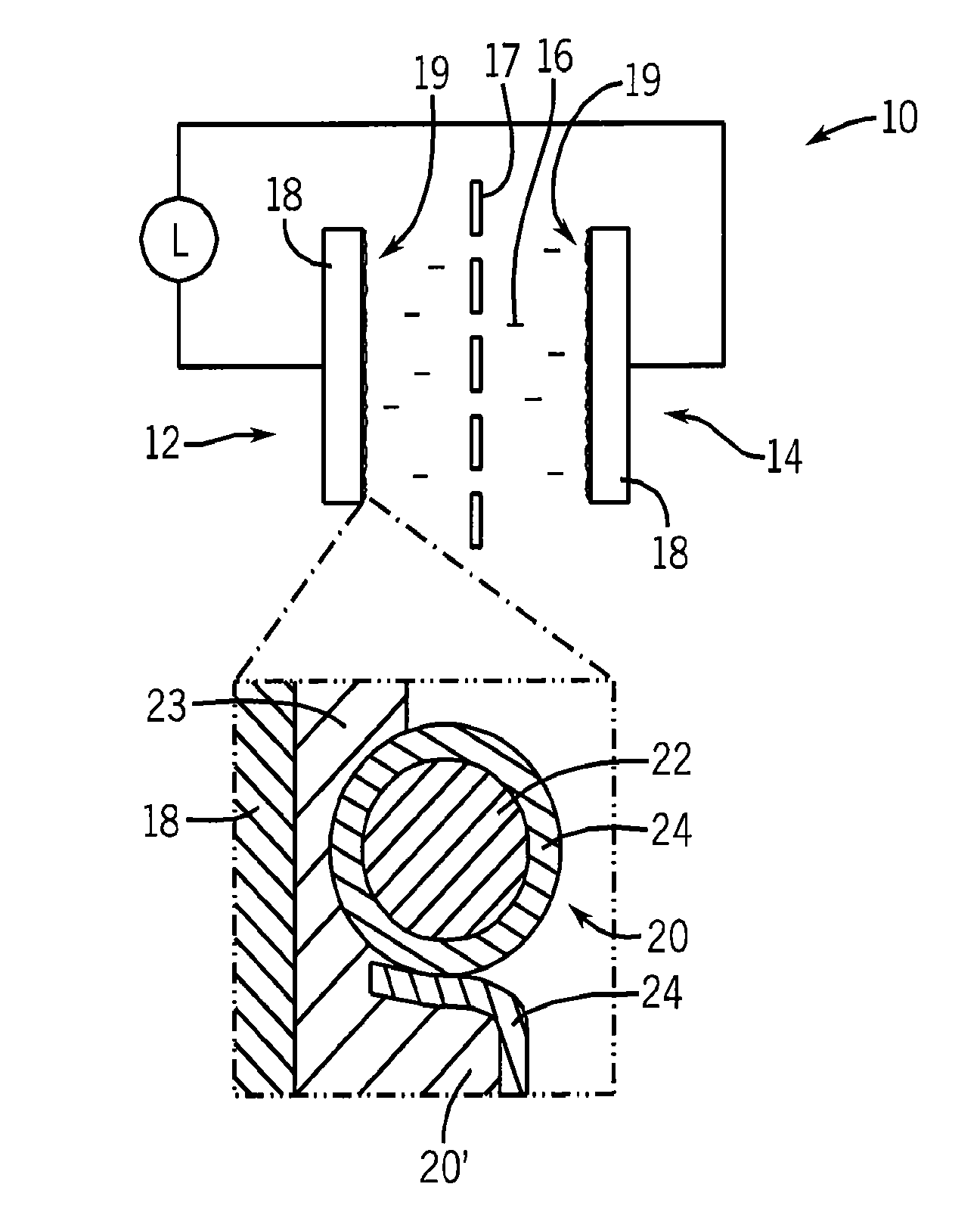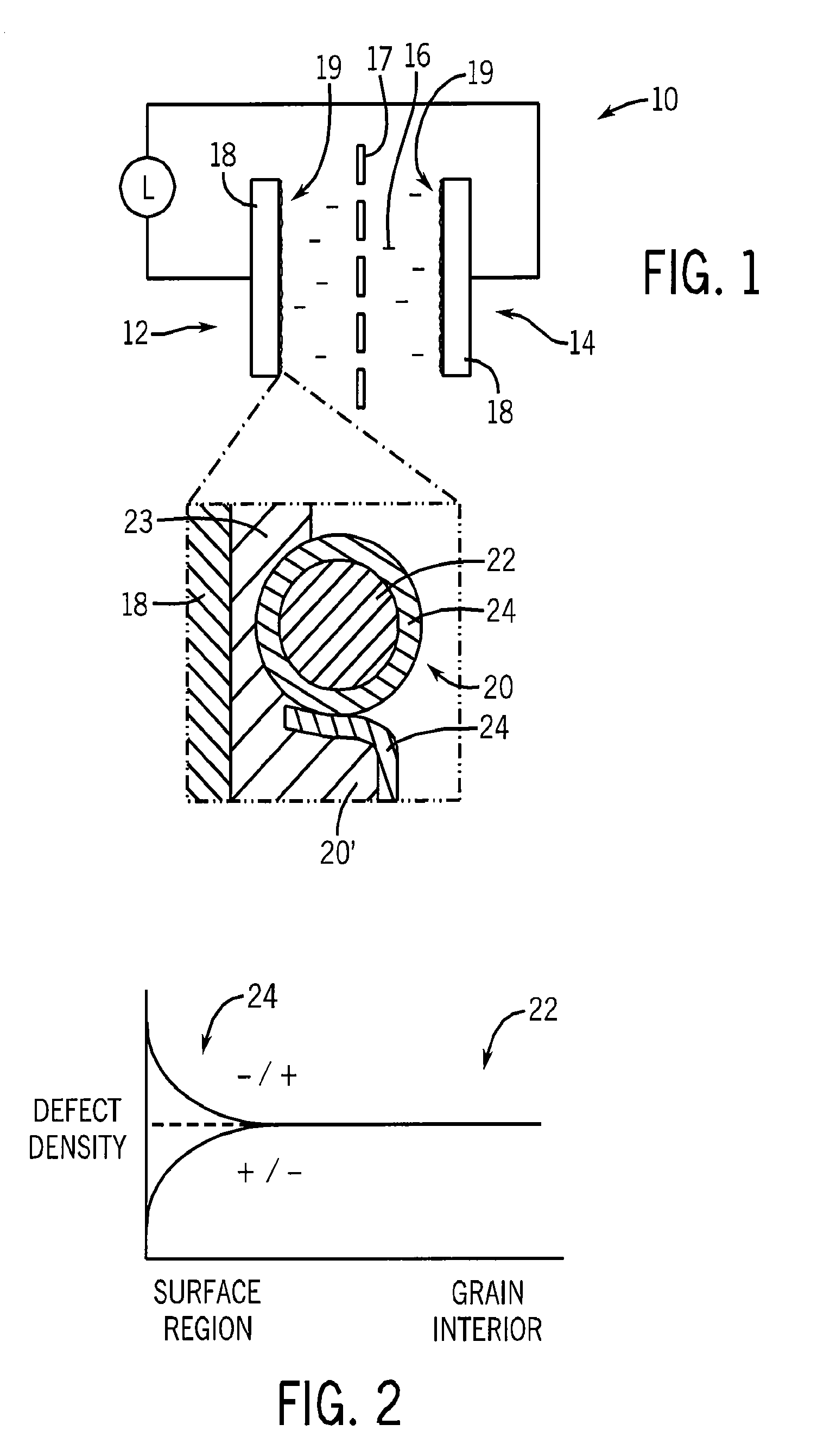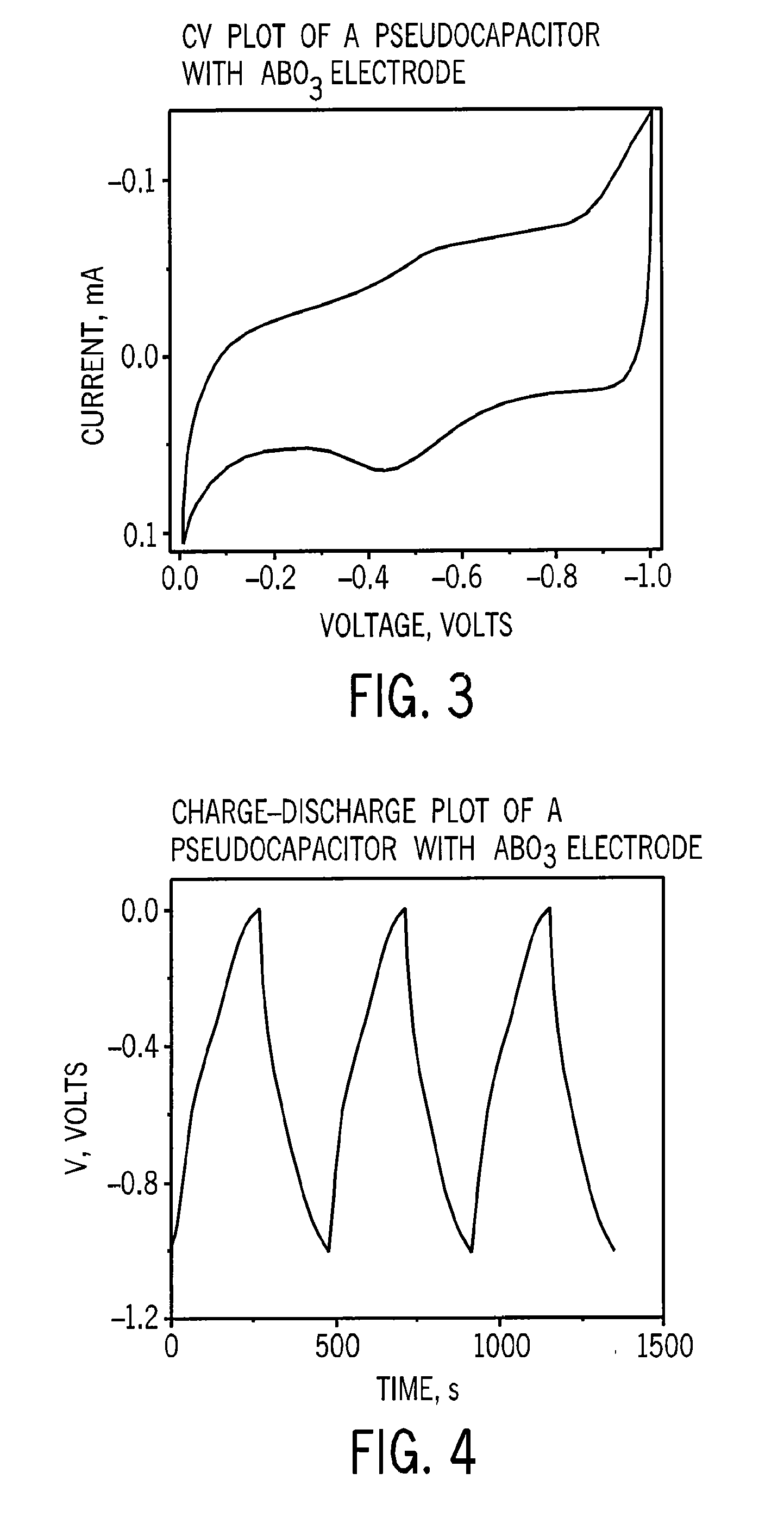High Performance Redox Capacitors Using Materials Possessing Non-Stoichiometry and Defect Chemical Equilibrium
a redox capacitor, non-stoichiometry technology, applied in the direction of capacitors, variable capacitors, capacitors, etc., can solve the problems of cation or anion sublattice vacancies formation, achieve high energy storage and power density, improve pseudocapacitor performance, and improve electron transfer
- Summary
- Abstract
- Description
- Claims
- Application Information
AI Technical Summary
Benefits of technology
Problems solved by technology
Method used
Image
Examples
example i
[0033]In this example, the nanoparticles 20 are formed of nanophase LaNiO3 derived from an energetic precursor.
[0034](A) Synthesis of Energetic Precursor.[0035]1. Dissolve 2.1650 g lanthanum nitrate hexahydrate and 1.5995 g nickel nitrate hexahydrate with enough deionized water to bring the final volume to 100 mL. Place in a 250 mL flask. Purge the flask with nitrogen.[0036]2. Place 1.8645 g ammonium oxalate hydrate and 50 mL deionized water in a 150 mL beaker. Stir until dissolved.[0037]3. Under a blanket of nitrogen, transfer the ammonium oxalate solution to the flask containing the lanthanum and nickel salts. Filter the solution and collect the precipitate on filter paper. Wash with filtrate with deionized water. Dry the product at low temperature via lyophilization.
[0038]The yield is 3.7395 g of a thermally-unstable energetic precursor comprising a mixed lanthanum / nickel salt containing both oxidizing and reducing ligands.
[0039](B) Initial Conversion of Energetic Precursor.[0040...
example ii
[0047]In this example, a pseudocapacitor electrode is constructed using nano-LaNiO3, activated carbon, and a binder.
[0048](A) Constructing the Electrode.
[0049]80 mg of nano-LaNiO3, 10 mg of activated vegetable carbon, and 10 mg of polyvinylidenefluoride are placed in an agate mortar. A small amount of N-Methyl-2-pyrrolidone is added and the mixture is ground with a pestle to form a slurry. The surface of a stainless steel disk (¾″ diameter by 0.010″ thick) was prepared by sanding (P 120 grit), washing with deionized water, and drying at 100° C. A thin uniform coat of the aforementioned slurry was painted onto the prepared disk. The coated disk was dried at 100° C.
[0050](B) Evaluating the Performance of the Electrode.
[0051]Electrochemical performance of the disk was evaluated in a 3-electrode configuration using cyclic voltammetry (FIG. 3) and charge-discharge analysis (FIG. 4), which validated the electrode's performance as a capacitor. The specific capacitance value of the electroa...
example iii
[0052]In this example, a capacitor is fabricated from electrodes made as described in Example II.
[0053](A) Fabricating the Capacitor.
[0054]An electrode assembly made by stacking an electrode, a paper disk (Whatman I filter paper), and a second electrode so that the coated faces of the electrodes face each other. The electrode assembly was placed in a standard CR-2016 stainless steel battery case (MTI Corporation). The case was filled with an electrolyte (1.0 M tetraethylammonium tetrafluoroborate in acetonitrile) and then sealed.
[0055](B) Evaluating the Performance of the Capacitor.
[0056]The performance of the capacitor was evaluated in a 2-electrode configuration using cyclic voltammetry. The capacitor had a capacitance of 0.5 Farads at 2.7 V. The volumetric energy density of this device was 9.4 Wh / L.
[0057]These experiments suggest that this technique can produce a capacity of at least 5 Farad per gram of nanoparticles at one volt when measured by cyclic voltammetry at a scan rate ...
PUM
| Property | Measurement | Unit |
|---|---|---|
| diameter | aaaaa | aaaaa |
| temperature | aaaaa | aaaaa |
| temperature | aaaaa | aaaaa |
Abstract
Description
Claims
Application Information
 Login to View More
Login to View More - R&D
- Intellectual Property
- Life Sciences
- Materials
- Tech Scout
- Unparalleled Data Quality
- Higher Quality Content
- 60% Fewer Hallucinations
Browse by: Latest US Patents, China's latest patents, Technical Efficacy Thesaurus, Application Domain, Technology Topic, Popular Technical Reports.
© 2025 PatSnap. All rights reserved.Legal|Privacy policy|Modern Slavery Act Transparency Statement|Sitemap|About US| Contact US: help@patsnap.com



